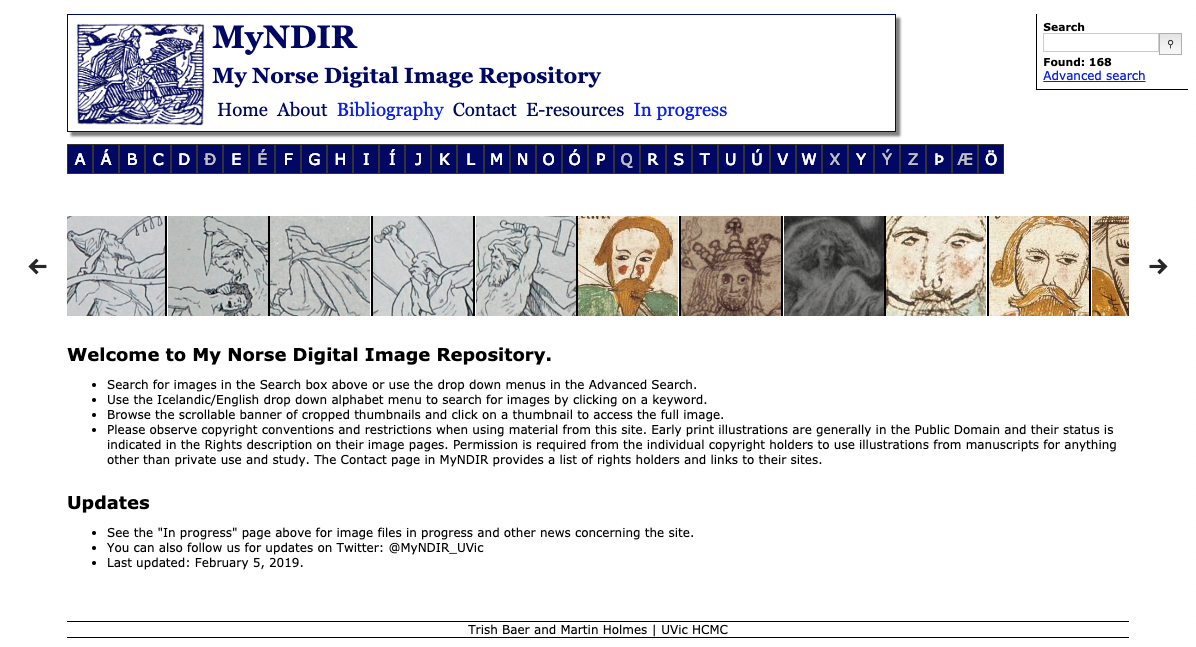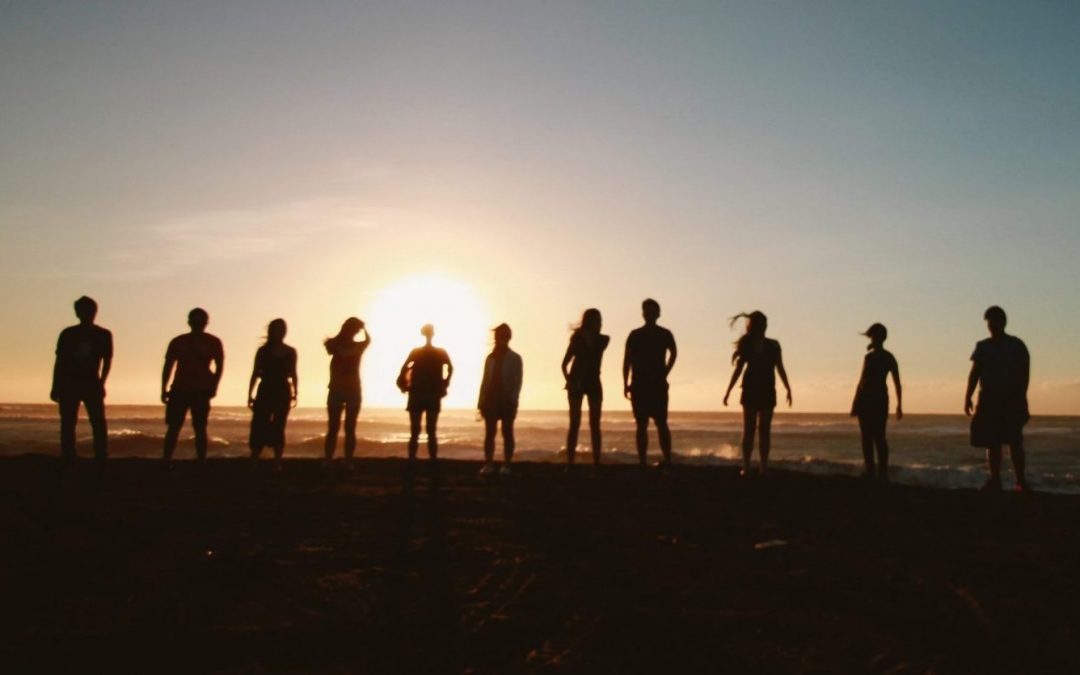This post is part of the Meet the ETCL Team series, which introduces the wonderful people who work in the lab and who have worked with us in the past.

Hefur óbilandi áhuga á Íslandi og norrænni goðafræði Á Íslandi eina ferðina enn Trish finnst alltaf jafn gaman að koma til Íslands og hefur eignast hér marga vini.
Trish and her research project—MyNDIR, My Norse Digital Image Repository—have been a part of the lab since 2006, when she was conducting her interdisciplinary doctoral research at UVic under the supervision of Ray Siemens (English and Computer Science; ETCL) and Catherine Harding (Art History and Visual Studies). Since defending her dissertation in 2013, An Old Norse Image Hoard: From the Analog Past to the Digital Present, Trish has continued to develop MyNDIR in the lab. She returned to the lab as an Open Knowledge Practicum fellow in 2017, and has joined us for the past two years as a Digital Scholarship Fellow. Trish has been doing digital humanities since 2002, when she worked with the University of Victoria’s Humanities Computing and Media Centre (HCMC) on The First Voyage of Othere, an XML markup project, writing XML without a text editor.
 MyNDIR (@MyNDIR_UVic) is an open access digital repository of images of Viking gods and heroes; myndir is the Icelandic word for picture. She is working on adding more images and metadata, all in XML. Much of her source material is from early print books and also manuscript archives in Iceland, Sweden, Denmark, and Norway, where she travelled to conduct her research with the support of the Social Sciences and Humanities Research Council (SSHRC). She also sources images from online sources, including Google Books, and the University of Victoria’s Special Collections. The database enables Trish and other researchers to compare illustrations by the same artist as well as comparing and tracing connections between similar images. Trish has also contributed her expertise to Wikipedia by contributing to numerous articles about Norse mythology.
MyNDIR (@MyNDIR_UVic) is an open access digital repository of images of Viking gods and heroes; myndir is the Icelandic word for picture. She is working on adding more images and metadata, all in XML. Much of her source material is from early print books and also manuscript archives in Iceland, Sweden, Denmark, and Norway, where she travelled to conduct her research with the support of the Social Sciences and Humanities Research Council (SSHRC). She also sources images from online sources, including Google Books, and the University of Victoria’s Special Collections. The database enables Trish and other researchers to compare illustrations by the same artist as well as comparing and tracing connections between similar images. Trish has also contributed her expertise to Wikipedia by contributing to numerous articles about Norse mythology.
Updates to MyNDIR are underway, including revitalizing the design and making the site more usable on mobile devices. MyNDIR is also part of The Endings Project, and plans are in place to create a static version of some of the images as a first step towards preserving the repository.
A typical day in the lab for Trish involves processing images for the repository by creating thumbnail images and entering metadata, creating and editing pages in XML, and keeping track of all the pieces of the project using a formidable spreadsheet in Google Docs. Oxygen is another of Trish’s essential tools; she is happy to no longer be writing XML in a plain text editor.
Trish enjoys working in the lab because of the community it provides and because it’s so easy to ask for help with a project and access research materials in the stacks and Special Collections.
When Trish is not working in the lab, she does fibre arts, including felting, knitting, and spinning, and she also creates objects for 3D printing.


